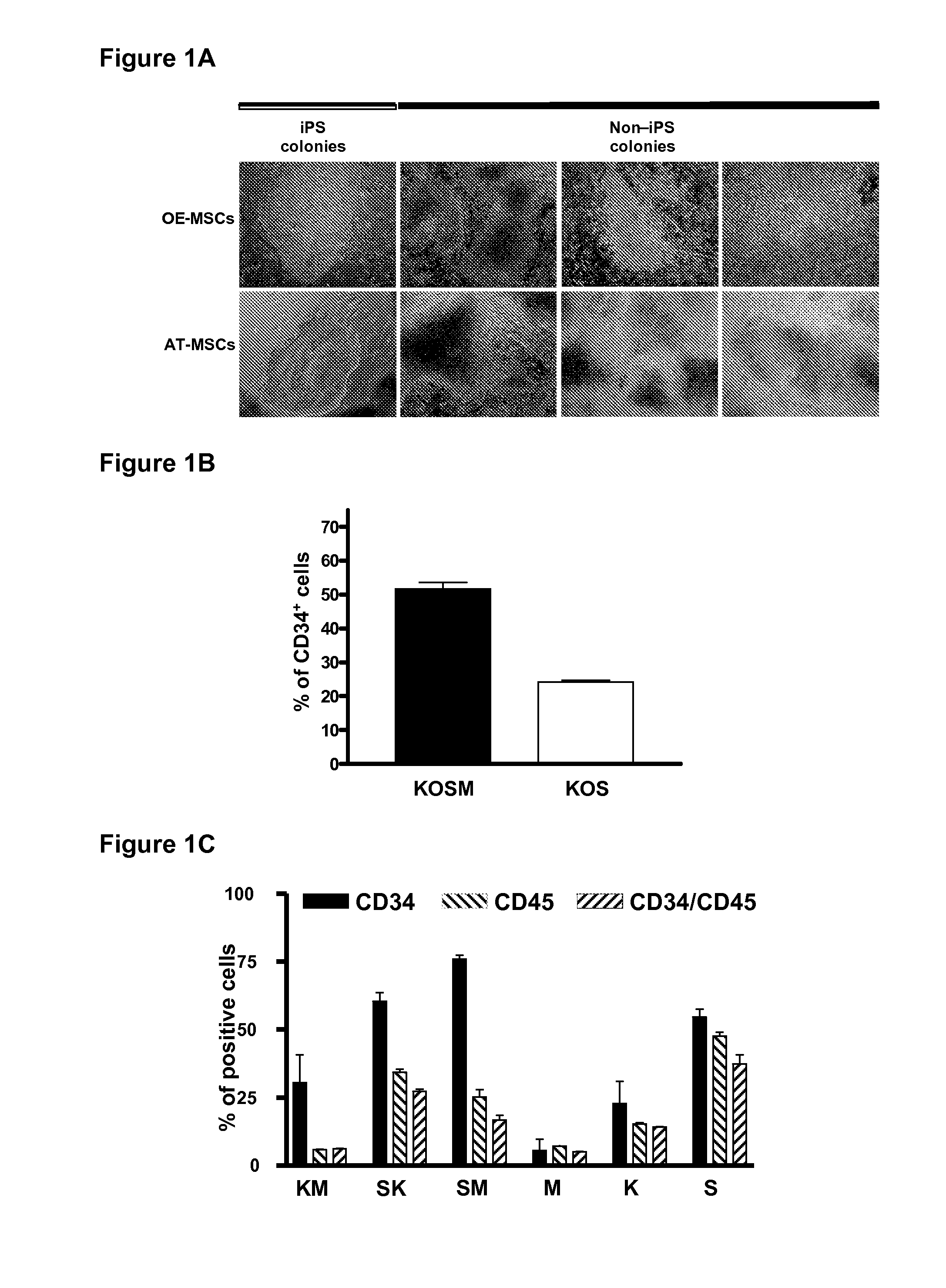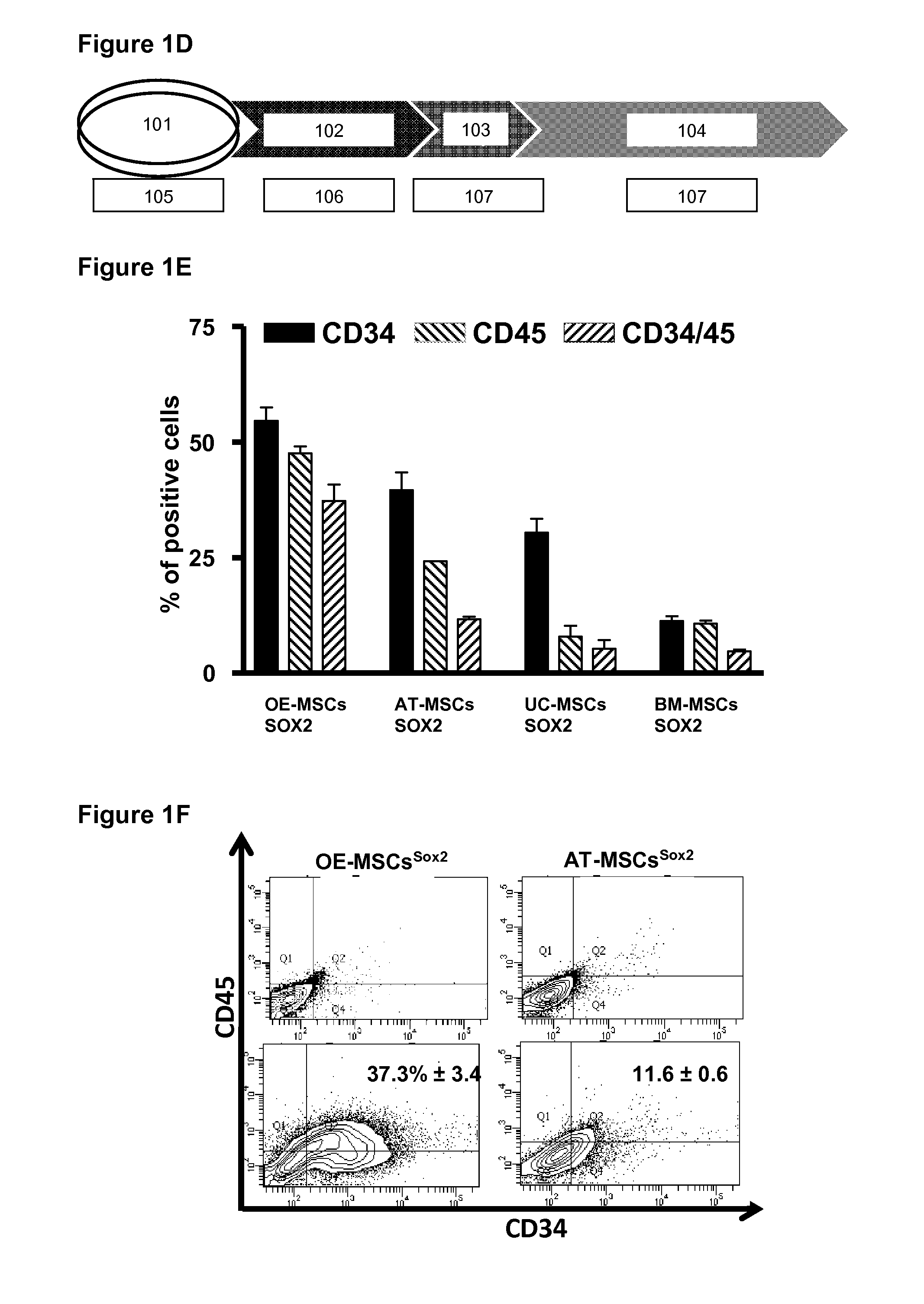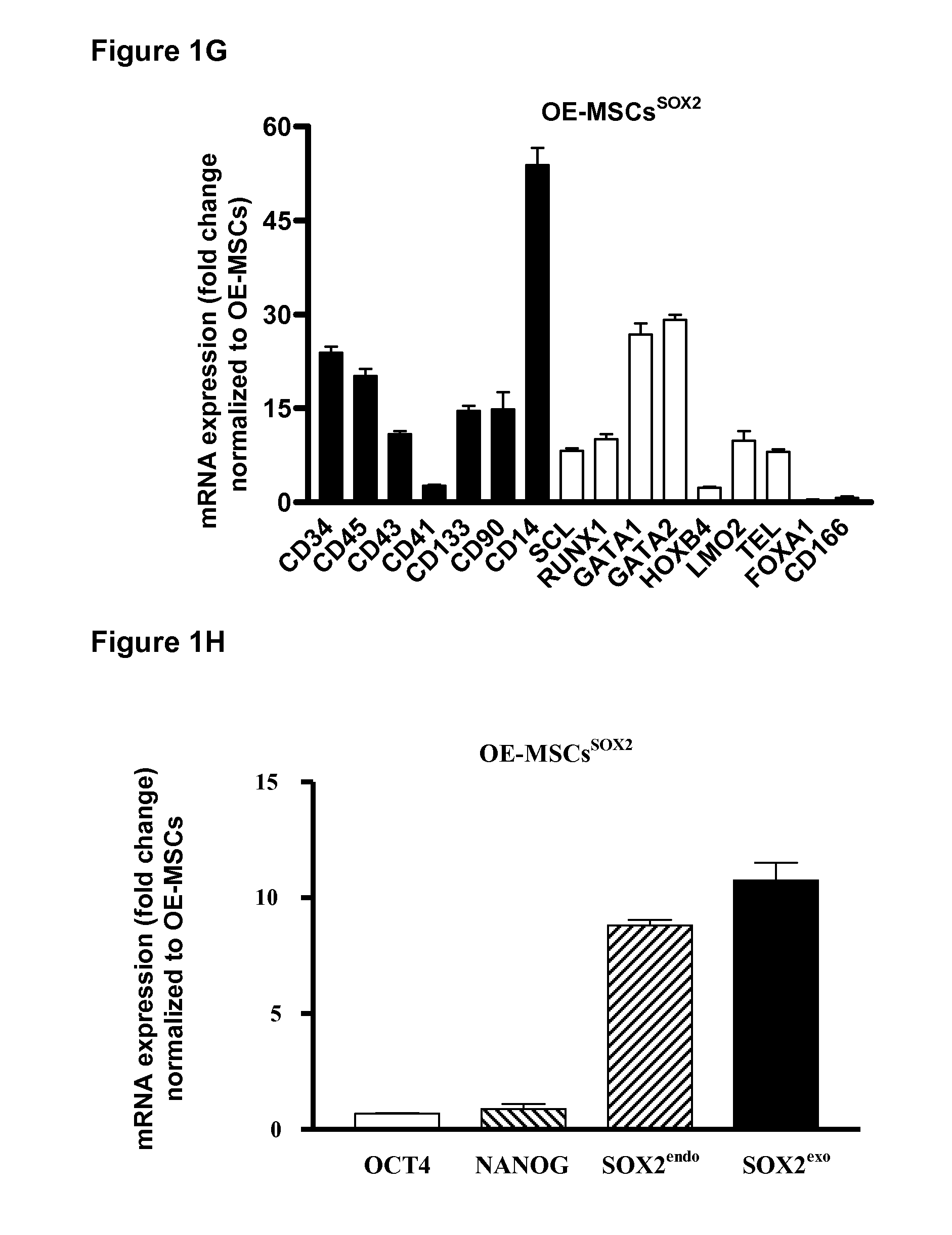Formation of hematopoietic progenitor cells from mesenchymal stem cells
a technology of mesenchymal stem cells and hematopoietic progenitor cells, which is applied in the direction of genetically modified cells, biocide, skeletal/connective tissue cells, etc., can solve the problem of low reprogramming efficiency
- Summary
- Abstract
- Description
- Claims
- Application Information
AI Technical Summary
Benefits of technology
Problems solved by technology
Method used
Image
Examples
example 1
Materials and Methods
[0113]Reagents and Antibodies:
[0114]The following antibodies were used for flow cytometry and western blotting experiments respectively: mouse anti-human CD34-APC (130-046-703, Miltenyi), mouse anti-human CD45-FITC (130-080-202, Miltenyi), mouse anti-human CD133 / 2 (293C3)-PE (130-090-853, Miltenyi), mouse anti-human CD43-FITC (560978, BD biosciences), mouse APC isotype control (555751, BD biosciences), mouse FITC isotype control (555748, BD biosciences), The TGFβRI SB431542 (S4317, Sigma-Aldrich) and MEK / ERK U0126 (U120, Sigma-Aldrich) inhibitors were diluted in DMSO accordingly to the manufacturers' instruction and used at a final concentration of 25 and 10 μM respectively during the duration of the experiments with media changes every second day unless otherwise stated. Equal concentration of the solvent alone was used as a negative control.
[0115]Human Olfactory Epithelial MSC and Adipose Tissue MSC Cell Culture:
[0116]Human nasal mucosa were obtained by biopsy...
example 2
Generation of Hematopoietic Stem Cells
[0138]A schematic representation for the transgeneration of Hematopoietic Stem Cells is shown in FIG. 1A. For comparison, Olfactory-Epithelia and Adipose-Tissue derived Mesenchymal Stem Cells (OEMSCs and ATMSCs, respectively) were transduced with a retroviral vector containing one or more of the Yamanaka factors KLF4, Oct4, Sox2 and c-Myc (KOSM) under conditions suitable for reprogramming. After one month, fully reprogrammed induced pluripotent stem (iPS) colonies were observed, as well as colonies with hematopoietic-like morphology representing populations “partially-reprogrammed” cells (FIG. 1A). Flow cytometry analysis confirmed the identity of the partially reprogrammed cells as hematopoietic-like progenitor cells (HPCs) as measured by expression of the hematopoietic progenitor markers CD34 (FIG. 1B).
[0139]Applicants first sought to exclude the oncogene, cMYC from the KOSM cocktail. As shown in FIG. 1B, the absence of c-Myc did not impair th...
example 3
Exclusion of iPS Generation
[0146]Applicants modified the original protocol of transgenerating MSCs to HPCs by excluding the possibility of parallel iPS generation. To this end, Applicants performed a series of experiments comparing transgeneration efficiency in different substrates, including the original mouse embryonic fibroblasts (MEF) feeder layer, matrigel coating, and basic plastic. Applicants' results showed no differences between the growing conditions tested. Thus, Applicants decided to use plastic, previously considered a non-permissive condition for iPS generation, as Applicants' transgeneration culture system.
PUM
 Login to View More
Login to View More Abstract
Description
Claims
Application Information
 Login to View More
Login to View More - R&D
- Intellectual Property
- Life Sciences
- Materials
- Tech Scout
- Unparalleled Data Quality
- Higher Quality Content
- 60% Fewer Hallucinations
Browse by: Latest US Patents, China's latest patents, Technical Efficacy Thesaurus, Application Domain, Technology Topic, Popular Technical Reports.
© 2025 PatSnap. All rights reserved.Legal|Privacy policy|Modern Slavery Act Transparency Statement|Sitemap|About US| Contact US: help@patsnap.com



